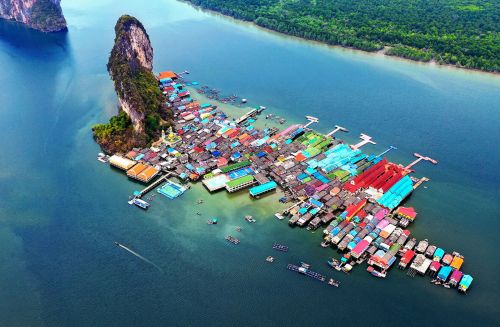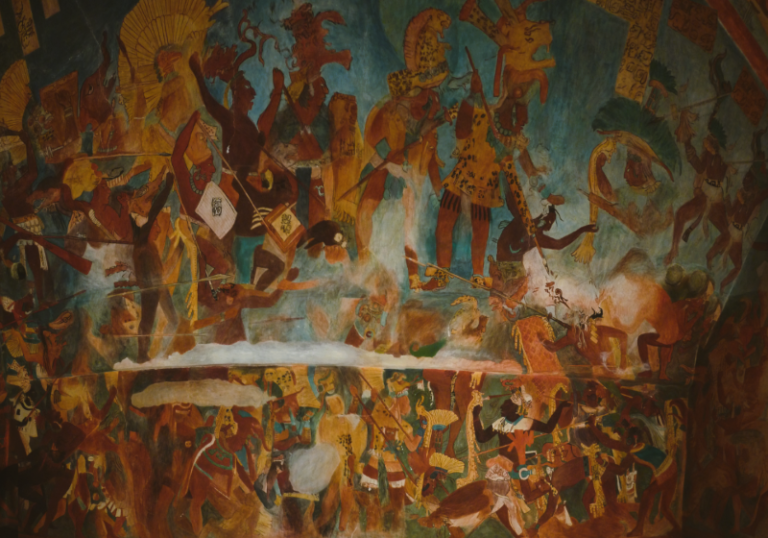

Far earlier than today’s ports and global supply chains, the seas around Thailand were a complex network of roads connecting diverse civilizations. Not only trade routes, these were lifelines fueling the growth of kingdoms, spreading new technology, and interweaving a nation’s cultural fabric. From the ancient Austronesian jade network to the colorful Maritime Silk Road, these routes defined the very fabric of what would be Thailand’s successful island grid and prosperity.
The next time you are on an island-hopping spree in Thailand, remember you are tracing paths laid long before beach bungalows and passports. One quick example is the ferry Koh Samui to Koh Tao. The ferry rides a corridor used for generations to reach protective anchorages and productive shores.
If this has piqued your interest, come along with us as we travel back in time to learn about the maritime itineraries that really constructed Thailand.
Thailand’s Strategic Location: A Crossroads of Continents
Thailand’s geography has long been its biggest selling point. Situated at the center of Southeast Asia, it is a natural bridge linking the Indian subcontinent to the west and East Asia (and especially China) in the north and east. This placed its historic sailors in the optimal position, and mariners from India, Persia, or China would inevitably sail through or around Thai waters. The extensive coastlines bordering the Andaman Sea and the Gulf of Thailand, and many sheltered harbors and accessible river systems, rendered the area an unavoidable focal point for commerce, cultural exchange, and powerful port cities. This natural advantage was not passive but actively pulled empires and expeditions and spurred dispersed settlements to become a dynamic network.
The Dawn of Maritime Trade: Antecedents to the Silk Road
Whereas the “Maritime Silk Road” routinely hijacks discussions of sea trade during ancient times, Thai interaction with extensive maritime networks dates back much further. These earlier precursor routes established the economic and cultural foundations.
One of the fascinating examples is the Neolithic Lingling-o Jade Maritime Trade Network. Stretching back to as early as 2000 BCE and thriving until about 1000 CE, the expansive network was manipulated by Austronesian explorers. It concerned the advanced trade of jade objects, especially the characteristic “lingling-o” ear pendants, between the South China Sea, linking modern-day Vietnam, the Philippines, Indonesia, and, importantly, peninsular Thailand. This was not merely about valuable commodities; it was a sophisticated system of cultural exchange, technological exchange, and the institution of long-distance communication far earlier than written history in most of these areas.
Another important early network involved the Dong Son Bronze Drums. Developed from the Dong Son civilization in northern Vietnam (c. 600 BCE to 400 CE), these elaborately ornamented ceremonial drums were spread widely throughout Southeast Asia, even extending into Thailand. Their appearance in archaeological contexts attests to established maritime trade routes and contacts, implying common religious systems or elite exchange networks spanning vast areas of the sea. These routes were responsible for planting the seeds of interconnectivity that expanded into more widespread, complex trade networks.
The Maritime Silk Road: Thailand’s Golden Age of Sea Trade
By the 1st century AD, the Maritime Silk Road had fully manifested as the preeminent network of long-distance trade. This complex tapestry of sea routes radiated from Southeast Asia and East Asia, through the Indian subcontinent, across the Arabian Sea to the Arabian Peninsula, and ultimately linked up with Roman Empire markets in Europe. Thailand’s function in this grand scheme was central to it.
Ports on either side of the Malay Peninsula in the Andaman Sea and the Gulf of Thailand became a necessary way station. They provided secure anchors for ships full of spices, ceramics, fabrics, and precious metals to replenish, repair, and exchange. Thai kingdoms were active contributors, not only as middlemen, but also by providing their own highly sought-after commodities such as aromatics, tin, and exotic woods. This period witnessed an unprecedented foreign influx of merchants, accompanied by new religions (Hinduism and Buddhism), languages, art forms, and administrative concepts that extensively influenced Thai civilization, manifesting in the emergence of early states such as Dvaravati and Srivijaya.
The Isthmus of Kra: A Shortcut That Built Empires
One of the most history-changing, yet geographically problematic, maritime strategies may have been the Isthmus of Kra. This thin strip of land on the Malay Peninsula offered ancient seafarers a special opportunity to avoid the longer and sometimes more dangerous route around the Strait of Malacca. Traders, rather, would land on one side of the isthmus (most often the Andaman Sea side), carry their cargo overland over mountain passes, and then re-ship from ports along the Gulf of Thailand.
It lowered travel time considerably and the risk of piracy or unfavorable weather conditions in the open sea. Several port towns prospered around this approach, such as ancient Takuapa, Tavoy (now in Myanmar, but traditionally associated with Thai trade), Ranong, and Singgora (now Songkhla). The Kra Isthmus became a strategic choke-point and a source of extraordinary richness and influence for the local states that dominated these vital overland connections. It was a reflection of man’s creativity in maximizing trade routes, having direct impacts on the place and wealth of numerous settlements that ultimately became part of the island chain of Thailand.
From Sukhothai to Ayutthaya: Unifying Maritime Power
Maritime trade expanded as Thai kingdoms became more centralized. Sukhothai Period (13th-15th century), although an inland kingdom, created essential trade linkages through rivers to coastal terminals, exporting commodities such as Chinese silk and Indian spices. This created the platform for a centralized trade administration. The Ayutthaya Period (14th-18th century) was a golden age with the capital city as an international hub. Its location close to the sea drew European, Chinese, and Indian traders, making Ayutthaya a prosperous, cosmopolitan state and making Thailand a seafaring power.
Summing Up
The enduring heritage of Thailand’s sea highways is profound. These ancient sea highways were the country’s lifeblood, stimulating economic development and cross-cultural exchange. These routes impacted the nation’s diversified food culture and its multi-ethnic composition. Ultimately, these “invisible highways” developed the dynamic, interconnected nation of Thailand today.


